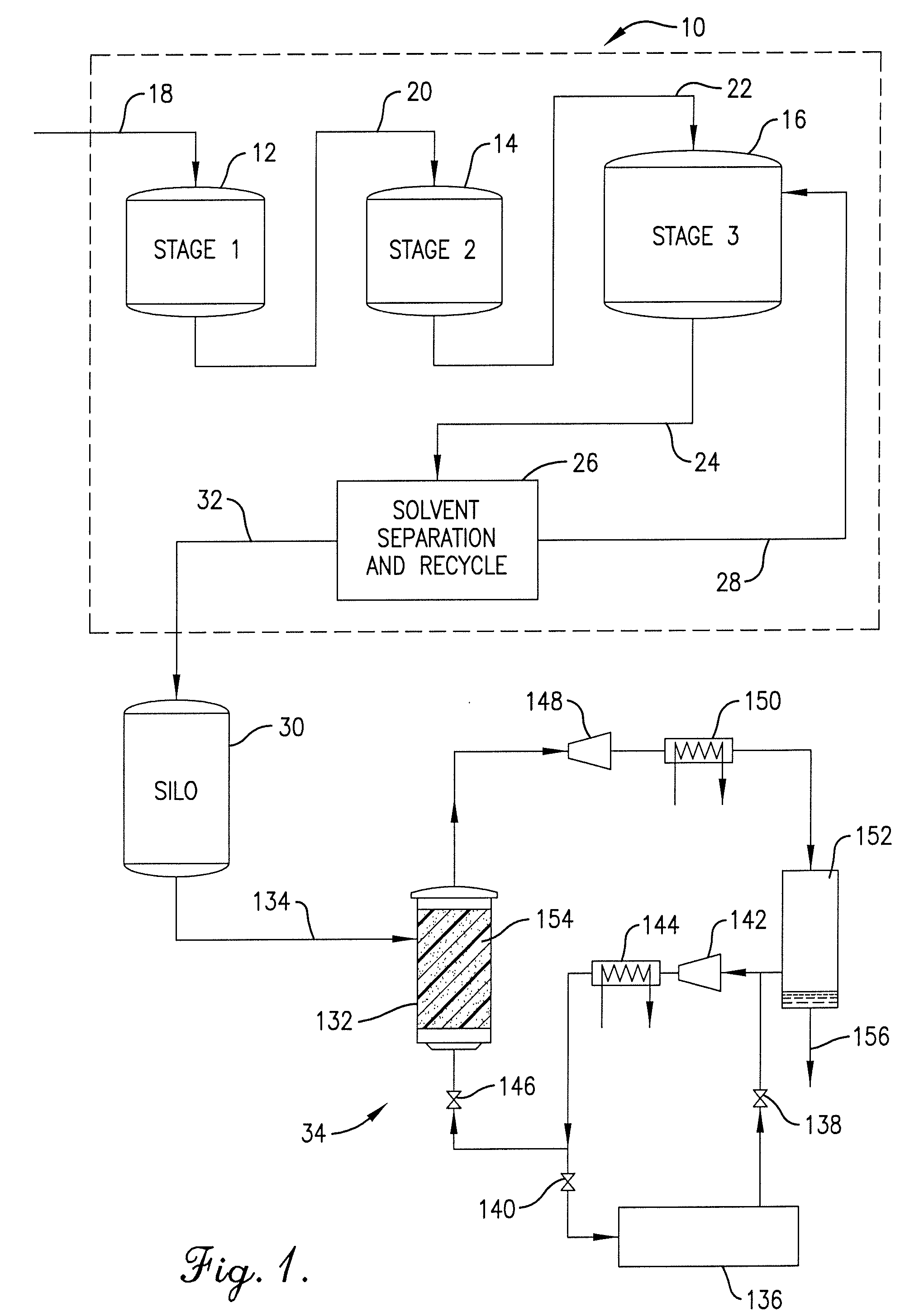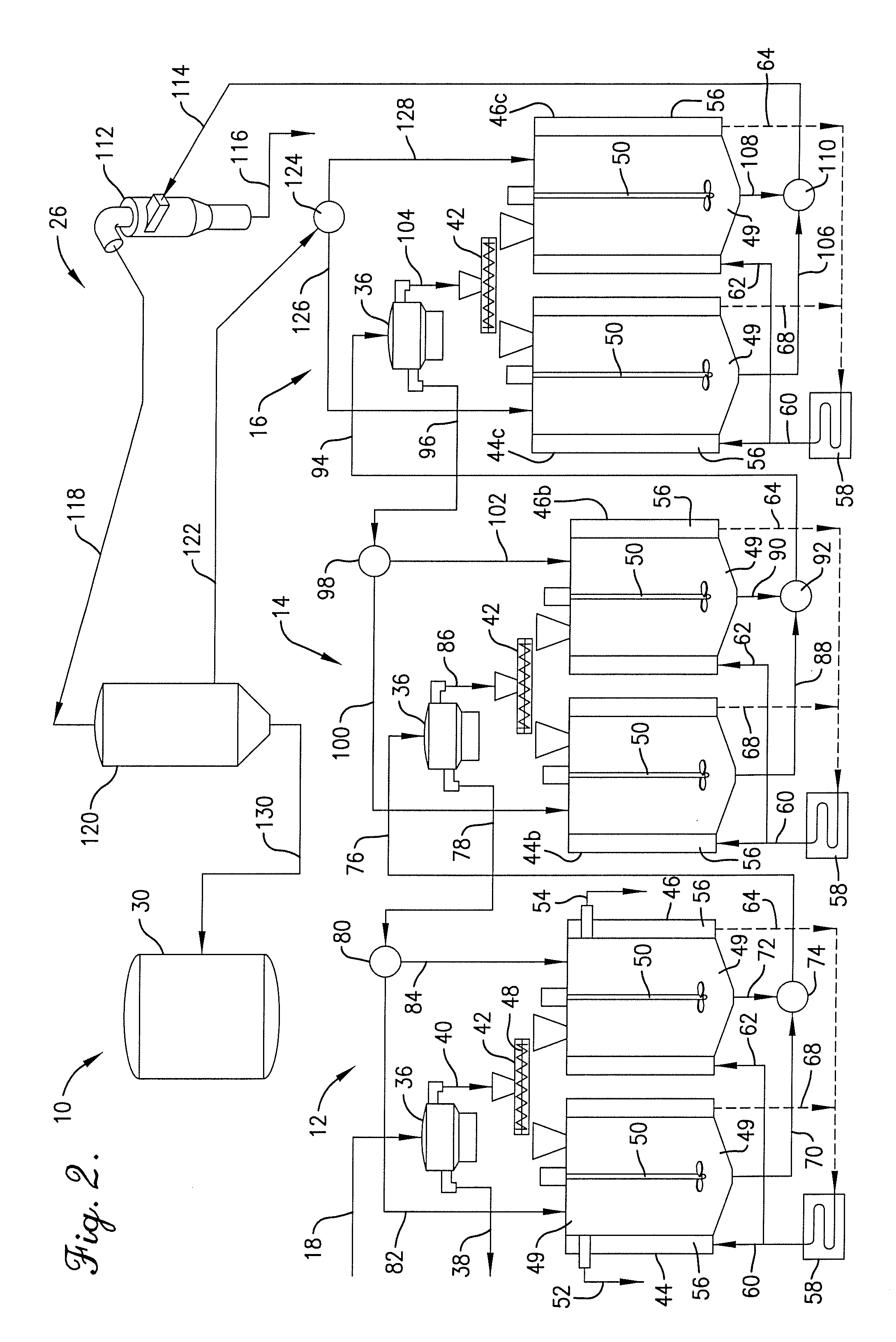Improved method to separate and recover oil and plastic from plastic contaminated with oil
a technology of oil and plastic, applied in the field of improved methods and systems for removing contaminants from synthetic resin materials, can solve the problems of large quantities that cannot be blended, difficult and expensive to remove residues or contaminants, and create additional was
- Summary
- Abstract
- Description
- Claims
- Application Information
AI Technical Summary
Benefits of technology
Problems solved by technology
Method used
Image
Examples
Embodiment Construction
[0026] Turning now to the drawing figures, and particularly FIG. 1, a process for removing contaminants from post-consumer containers made from synthetic resin material in accordance with a preferred embodiment of the invention is illustrated. The present invention is particularly useful in the removal of oil from high density polyethylene containers, pesticides from HDPE containers, milk from HDPE containers, “soda water” from polyethylene terephthalate containers, polychlorinated biphenyl (PCB) contaminants particularly from automotive plastics, and contaminants from various other post-consumer containers, such as detergent containers, collected from curbside recycling programs. Also, the present system is highly effective in removing labels and label adhesive from synthetic resin material containers. Furthermore, the present invention facilitates contaminant recoveryfrom synthetic resin materials thereby enabling the contaminants to be disposed of in a safe and environmentally fr...
PUM
| Property | Measurement | Unit |
|---|---|---|
| pressure | aaaaa | aaaaa |
| temperature | aaaaa | aaaaa |
| specific gravity | aaaaa | aaaaa |
Abstract
Description
Claims
Application Information
 Login to View More
Login to View More - R&D
- Intellectual Property
- Life Sciences
- Materials
- Tech Scout
- Unparalleled Data Quality
- Higher Quality Content
- 60% Fewer Hallucinations
Browse by: Latest US Patents, China's latest patents, Technical Efficacy Thesaurus, Application Domain, Technology Topic, Popular Technical Reports.
© 2025 PatSnap. All rights reserved.Legal|Privacy policy|Modern Slavery Act Transparency Statement|Sitemap|About US| Contact US: help@patsnap.com


